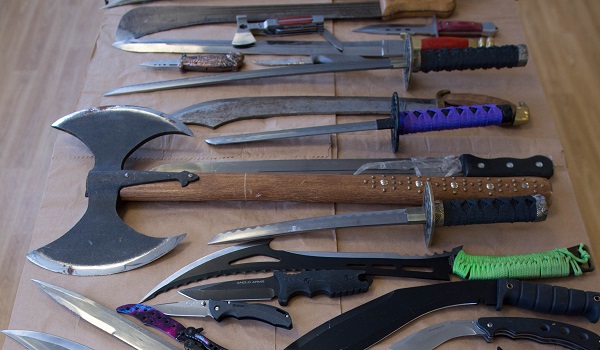Almost one in 10 teenage boys have carried a weapon, new study reveals
Nearly one in ten boys have carried or used a knife, gun or other weapon by the age of 17, a major new study has revealed.
In addition, one in four of those involved in this type of serious offending self-identify themselves as gang members.
The briefing paper, published today (June 30) by the Centre for Longitudinal Studies at University College London (UCL) shows that among members of generation Z – teenagers born in 2000 to 2002 – those who had carried or used a weapon at age 17 were also more likely to have committed other offences, such as assault, breaking and entering, theft and criminal damage. They were also much more likely to have offended many times in the past year.
The research also reveals the significant role that childhood circumstances and experiences play in shaping adolescents’ behaviours, and how they, in turn, can determine the routes young people take as they approach adulthood.
Co-author, Doctor Aase Villadsen said: “This research provides new evidence about levels of carrying or use of a weapon and offending among generation Z in late adolescence. It also establishes a worrying link between negative childhood circumstances and experiences, such as experience of domestic abuse between parents and exclusion from school, adolescent substance use, mental health problems and serious offending at age 17.”
The researchers analysed data collected from a nationally representative group of more than 13,000 teenagers in the UK who have been taking part in the Millennium Cohort Study (MCS) since they were born. At age 17, in 2018/19, they were asked whether they had committed any criminal offences in the past year, including carrying or using a weapon, assault, shoplifting, breaking and entering, vehicle theft, stealing from others, and vandalism. They also reported on whether they had ever been a gang member, and whether they had had contact with the police.
The findings show one in 15 (6.4 per cent) young people had carried or used a weapon in the past year, with males more than twice as likely to have done this than females (8.8 per cent vs 3.9 per cent).
Young people who had carried or used a weapon were 10 times more likely to have ever been a gang member compared to those who had not (26 per cent vs 2.5 per cent). They were also ten times more likely to have engaged in neighbourhood crime, such as breaking and entering, stealing from others, or vehicle theft (20 per cent vs 1.8 per cent), seven times more likely to have engaged in criminal damage and arson (51 per cent vs 6.8 per cent), and two and a half times more likely to have committed assault (66 per cent vs 25 per cent).
In addition, one in three of those who had carried or used a weapon had engaged in ten or more offences in the past year, compared to just one in 25 of those who hadn’t engaged in this form of serious offending (36 per cent vs 3.5 per cent).
The research team used the rich longitudinal data collected from the MCS study participants since birth to investigate the links between circumstances and behaviours in childhood and adolescence and carrying or using a weapon at age 17. The study showed that while young people’s experiences in early adolescence were strongly linked to serious offending, their childhood circumstances and behaviours mattered too.
The study revealed that teenagers who had engaged in substance use at age 14, such as drinking alcohol, smoking cigarettes and taking drugs, and those who had friends who had used multiple substances in early adolescence, were at greater risk of carrying or using a weapon at age 17. Additionally, being excluded from school between ages 11 and 14 was a significant risk factor for this form of serious offending in late adolescence.
Low household income and experience of domestic abuse between parents during childhood were linked to carrying or using a weapon at age 17. Mental health problems, such as behavioural issues and hyperactivity between ages three and 11, and self-harm at age 14, were also found to be associated with serious offending in late adolescence.
Dr Villadsen said: “Although previous research shows that weapon carrying is not markedly different in young people today than in earlier generations, official statistics show that in the past five years there has been an increase in knife use and possession among youths.
“Our new research reveals that one in 15 young people across the country had carried or used a weapon in the past year at age 17. We also found that these teenagers were also much more likely to be gang members, and to have carried out other offences. With this research helping to pinpoint core areas for intervention in childhood and adolescence, it is imperative that investments are made in early intervention and prevention to focus on those most at risk of engaging in weapon carrying or use.”
Co-author Professor Emla Fitzsimons added: “This study provides concerning new evidence about levels of serious offending among UK teenagers in 2018-19. With sharply widening inequalities associated with the Covid-19 pandemic, it remains to be seen how the crisis may affect the prospects of those children and adolescents who are at greatest risk of joining a gang and engaging in knife-related crime. As a result, the need to further our understanding of the complex interaction between disadvantage, substance use, mental ill-health and offending behaviour has never been more pressing, not only for individuals and families, but for the whole of society.”







